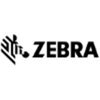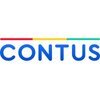
i
Acma
Computers
Filter interviews by
Acma Computers Desktop Support Engineer Interview Questions and Answers
8 Interview questions
A server is a computer or software program that provides functionality or resources to other computers, known as clients, over a network.
Servers store and manage data, files, applications, and services for clients to access.
They can provide email services, host websites, store files, and more.
Examples include web servers like Apache, email servers like Microsoft Exchange, and file servers like Windows Server.
SSD is faster, more durable, and more expensive than HDD.
SSD uses flash memory to store data, while HDD uses spinning disks.
SSD has faster read/write speeds compared to HDD.
SSD is more durable as it has no moving parts, while HDD can be prone to mechanical failure.
SSD is more expensive per gigabyte compared to HDD.
Examples: SSD - Samsung 970 EVO, HDD - Seagate Barracuda
There are two main types of RAM: DRAM (Dynamic Random Access Memory) and SRAM (Static Random Access Memory).
DRAM (Dynamic Random Access Memory) - most common type, used in computers for main memory
SRAM (Static Random Access Memory) - faster and more expensive than DRAM, used in cache memory
Other types include SDRAM (Synchronous Dynamic Random Access Memory), DDR (Double Data Rate) RAM, and DDR2/3/4 RAM
Domain Naming System (DNS) is a system that translates domain names to IP addresses.
DNS is like a phone book for the internet, translating human-readable domain names (like google.com) to machine-readable IP addresses (like 172.217.3.206)
DNS helps users access websites and other online services by resolving domain names to IP addresses
DNS servers store records of domain names and their corresponding IP addresses
Topology refers to the arrangement of different elements in a network.
Topology defines how devices are connected in a network
Common topologies include bus, star, ring, and mesh
Each topology has its own advantages and disadvantages
Topology affects the performance, scalability, and fault tolerance of a network
CPU full from RAM full form
CPU stands for Central Processing Unit
RAM stands for Random Access Memory
When the RAM is full, it can cause the CPU to become overloaded
This can lead to slow performance and system crashes
A server is a computer or software that provides functionality for other programs or devices, while a router is a networking device that forwards data packets between computer networks.
A server can be used to host websites, store files, manage network resources, etc.
Examples of servers include web servers, email servers, file servers, etc.
A router connects multiple networks together and routes data packets between...
Types of motherboards include ATX, Micro ATX, Mini ITX, and Extended ATX.
ATX (Advanced Technology eXtended) is the most common form factor for desktop motherboards.
Micro ATX is a smaller form factor than ATX, often used in compact desktops.
Mini ITX is even smaller than Micro ATX, commonly used in small form factor PCs.
Extended ATX is a larger form factor than ATX, providing additional expansion slots and features.
Acma Computers Desktop Support Engineer Interview Experiences
6 interviews found
(4 Questions)
- Q1. I am searching for job IT Location Chandigarh
- Q2. My name is vaibhav Sharma I am from Chandigarh I am find in the Job
- Q3. I'm searching for Job Chandigarh location
- Q4. I'm interested
Interview Preparation Tips
I applied via Company Website and was interviewed in Dec 2023. There was 1 interview round.
(9 Questions)
- Q1. Smps ke bare me and ram ke bare me
- Q2. SMPS ke bare me aur ram ke bare me
- Q3. Ram mother ke slots ke name
- Q4. CPU full from ram full form
- Ans.
CPU full from RAM full form
CPU stands for Central Processing Unit
RAM stands for Random Access Memory
When the RAM is full, it can cause the CPU to become overloaded
This can lead to slow performance and system crashes
- Q5. Computer ka full from
- Q6. Types of mother board
- Ans.
Types of motherboards include ATX, Micro ATX, Mini ITX, and Extended ATX.
ATX (Advanced Technology eXtended) is the most common form factor for desktop motherboards.
Micro ATX is a smaller form factor than ATX, often used in compact desktops.
Mini ITX is even smaller than Micro ATX, commonly used in small form factor PCs.
Extended ATX is a larger form factor than ATX, providing additional expansion slots and features.
- Q7. That's it I have no question
- Q8. CPU fan ke bare me
- Q9. HDD ke bare me FDD ke bare me
Skills evaluated in this interview
I appeared for an interview in Sep 2024.
(2 Questions)
- Q1. What is your notice period
- Ans.
My notice period is two weeks, allowing for a smooth transition and handover of responsibilities.
Standard notice period in many companies is two weeks.
This timeframe allows for proper knowledge transfer.
I can assist in training my replacement if needed.
I am flexible and can negotiate if the situation requires.
- Q2. What is your expectations
- Ans.
I expect to contribute to a positive user experience by providing efficient technical support and enhancing my skills in the process.
Deliver timely and effective technical support to end-users, ensuring minimal downtime.
Collaborate with team members to troubleshoot complex issues, like network connectivity problems.
Continuously learn about new technologies and tools to improve support processes, such as mastering remot...
I appeared for an interview before Dec 2023.
(5 Questions)
- Q1. What is active directory?
- Ans.
Active Directory is a directory service developed by Microsoft for Windows domain networks.
Centralized database for managing network resources
Stores information about users, computers, and other network objects
Allows for authentication and authorization of users
Enables administrators to assign policies, deploy software, and apply updates
Example: User accounts, group policies, security settings
- Q2. What is difference between SSD & HDD?
- Ans.
SSD is faster, more durable, and more expensive than HDD.
SSD uses flash memory to store data, while HDD uses spinning disks.
SSD has faster read/write speeds compared to HDD.
SSD is more durable as it has no moving parts, while HDD can be prone to mechanical failure.
SSD is more expensive per gigabyte compared to HDD.
Examples: SSD - Samsung 970 EVO, HDD - Seagate Barracuda
- Q3. How many types of Ram ?
- Ans.
There are two main types of RAM: DRAM (Dynamic Random Access Memory) and SRAM (Static Random Access Memory).
DRAM (Dynamic Random Access Memory) - most common type, used in computers for main memory
SRAM (Static Random Access Memory) - faster and more expensive than DRAM, used in cache memory
Other types include SDRAM (Synchronous Dynamic Random Access Memory), DDR (Double Data Rate) RAM, and DDR2/3/4 RAM
- Q4. What is server ?
- Ans.
A server is a computer or software program that provides functionality or resources to other computers, known as clients, over a network.
Servers store and manage data, files, applications, and services for clients to access.
They can provide email services, host websites, store files, and more.
Examples include web servers like Apache, email servers like Microsoft Exchange, and file servers like Windows Server.
- Q5. What is Domain naming system ?
- Ans.
Domain Naming System (DNS) is a system that translates domain names to IP addresses.
DNS is like a phone book for the internet, translating human-readable domain names (like google.com) to machine-readable IP addresses (like 172.217.3.206)
DNS helps users access websites and other online services by resolving domain names to IP addresses
DNS servers store records of domain names and their corresponding IP addresses
Interview Preparation Tips
(2 Questions)
- Q1. What is server and router?
- Ans.
A server is a computer or software that provides functionality for other programs or devices, while a router is a networking device that forwards data packets between computer networks.
A server can be used to host websites, store files, manage network resources, etc.
Examples of servers include web servers, email servers, file servers, etc.
A router connects multiple networks together and routes data packets between them...
- Q2. What is topology?
- Ans.
Topology refers to the arrangement of different elements in a network.
Topology defines how devices are connected in a network
Common topologies include bus, star, ring, and mesh
Each topology has its own advantages and disadvantages
Topology affects the performance, scalability, and fault tolerance of a network
Interview Preparation Tips
Skills evaluated in this interview
I applied via Referral and was interviewed in Sep 2021. There were 2 interview rounds.

(7 Questions)
- Q1. What are your salary expectations?
- Q2. Share details of your previous job.
- Q3. Why should we hire you?
- Q4. Why are you looking for a change?
- Q5. Where do you see yourself in 5 years?
- Q6. What are your strengths and weaknesses?
- Q7. Tell me about yourself.
Interview Preparation Tips
Top trending discussions






Interview questions from similar companies

I applied via Recruitment Consultant and was interviewed before Oct 2020. There were 3 interview rounds.
Interview Questionnaire
1 Question
- Q1. Python file handling, input,output, in a file, Sql joins, list sort in python, basics of GIS, Web service how to test
Interview Preparation Tips

I appeared for an interview before Oct 2023.
(2 Questions)
- Q1. React Todo List
- Ans.
A React Todo List app allows users to create, manage, and delete tasks efficiently using state management.
Use functional components and hooks like useState for managing state.
Implement a form to add new todos, capturing input with controlled components.
Display the list of todos using the map function to render each item.
Add functionality to mark todos as completed, possibly using a checkbox.
Include a delete button for ...
- Q2. Closure in Javascript
- Ans.
Closure in JavaScript allows a function to access variables from its outer scope even after the outer function has finished executing.
Closure is created when a function is defined within another function and the inner function references variables from the outer function.
The inner function maintains a reference to the outer function's scope, allowing it to access those variables even after the outer function has return...
Skills evaluated in this interview

I applied via LinkedIn and was interviewed in Sep 2024. There was 1 interview round.
(1 Question)
- Q1. Basic flutter coding questions

I applied via LinkedIn and was interviewed before Nov 2023. There was 1 interview round.
Had to brief about myself, my technical skills and projects. Few Technical questions regarding the tech stack and casual discussion.
Interview Preparation Tips
Acma Computers Interview FAQs
Tell us how to improve this page.
Acma Computers Interviews By Designations
- Acma Computers Desktop Support Engineer Interview Questions
- Acma Computers Desktop Support Engineer L1 Interview Questions
- Acma Computers IT Support Specialist Interview Questions
- Acma Computers Deskside Support Engineer Interview Questions
- Acma Computers Engineer- Customer Support Interview Questions
- Acma Computers Desktop Support Engineer L2 Interview Questions
- Acma Computers BD Executive Interview Questions
- Acma Computers BDM Interview Questions
- Show more
Interview Questions for Popular Designations
- Software Engineer Interview Questions
- Senior Engineer Interview Questions
- Devops Engineer Interview Questions
- Technical Support Engineer Interview Questions
- Network Engineer Interview Questions
- Support Engineer Interview Questions
- Desktop Support Engineer L1 and L2 Interview Questions
- Desktop Engineer Interview Questions
- Show more
Overall Interview Experience Rating
based on 8 interview experiences
Difficulty level
Duration
Interview Questions from Similar Companies
Acma Computers Desktop Support Engineer Reviews and Ratings
based on 20 reviews
Rating in categories
|
Desktop Support Engineer
104
salaries
| ₹1.4 L/yr - ₹4 L/yr |
|
Desktop Support Engineer L1 and L2
35
salaries
| ₹2.4 L/yr - ₹4.4 L/yr |
|
Desktop Support Engineer L2
24
salaries
| ₹2.5 L/yr - ₹3.6 L/yr |
|
Desktop Support Engineer L1
19
salaries
| ₹2.1 L/yr - ₹3.1 L/yr |
|
Technical Support Engineer
14
salaries
| ₹2.2 L/yr - ₹3.6 L/yr |

Accel Frontline

Apmosys Technologies

Pitney Bowes

DynPro
- Home >
- Interviews >
- Acma Computers Interview Questions














